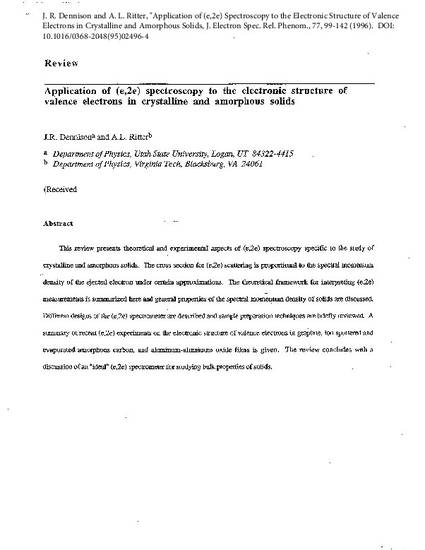
This review presents theoretical and experimental aspects of (e,2e) spectroscopy specific to the study of crystalline and amorphous solids. The cross section for (e,2e) scattering is proportional to the spectral momentum density of the ejected electron under certain approximations. The theoretical framework for interpreting (e,2e) measurements is summarized here and general properties of the spectral momentum density of solids are discussed. Different designs of the (e,2e) spectrometer are described and sample preparation techniques are briefly reviewed. A summary of (e,2e) experiments on the electronic structure of valence electrons in graphite, ion sputtered and evaporated amorphous carbon, aluminum/aluminum oxide composites, amorphous silicon, and silicon carbide films is given. The review concludes with a discussion of an “ideal” (e,2e) spectrometer for studying the bulk properties of solids.

http://www.sciencedirect.com/science/article/pii/0368204895024964
Published by Elsevier in Journal of Electron Spectroscopy and Related Phenomena. Authors' PDF is available for download.